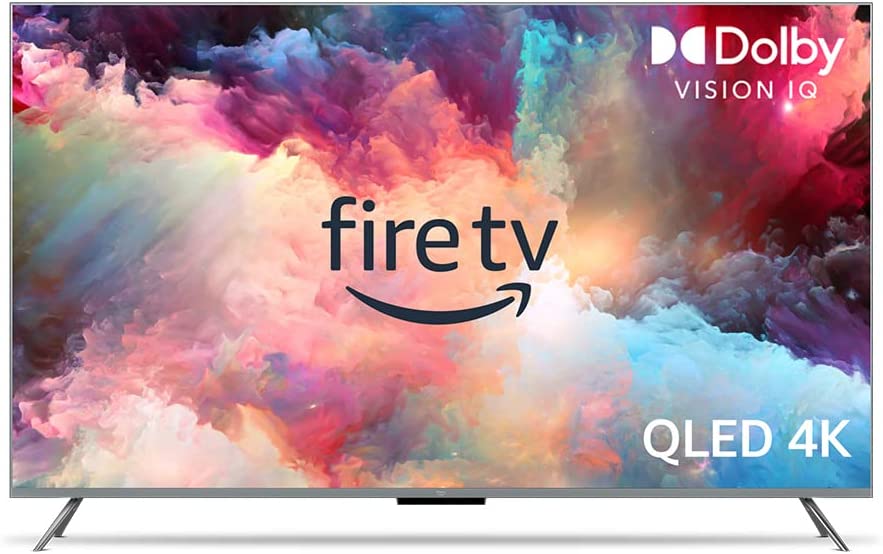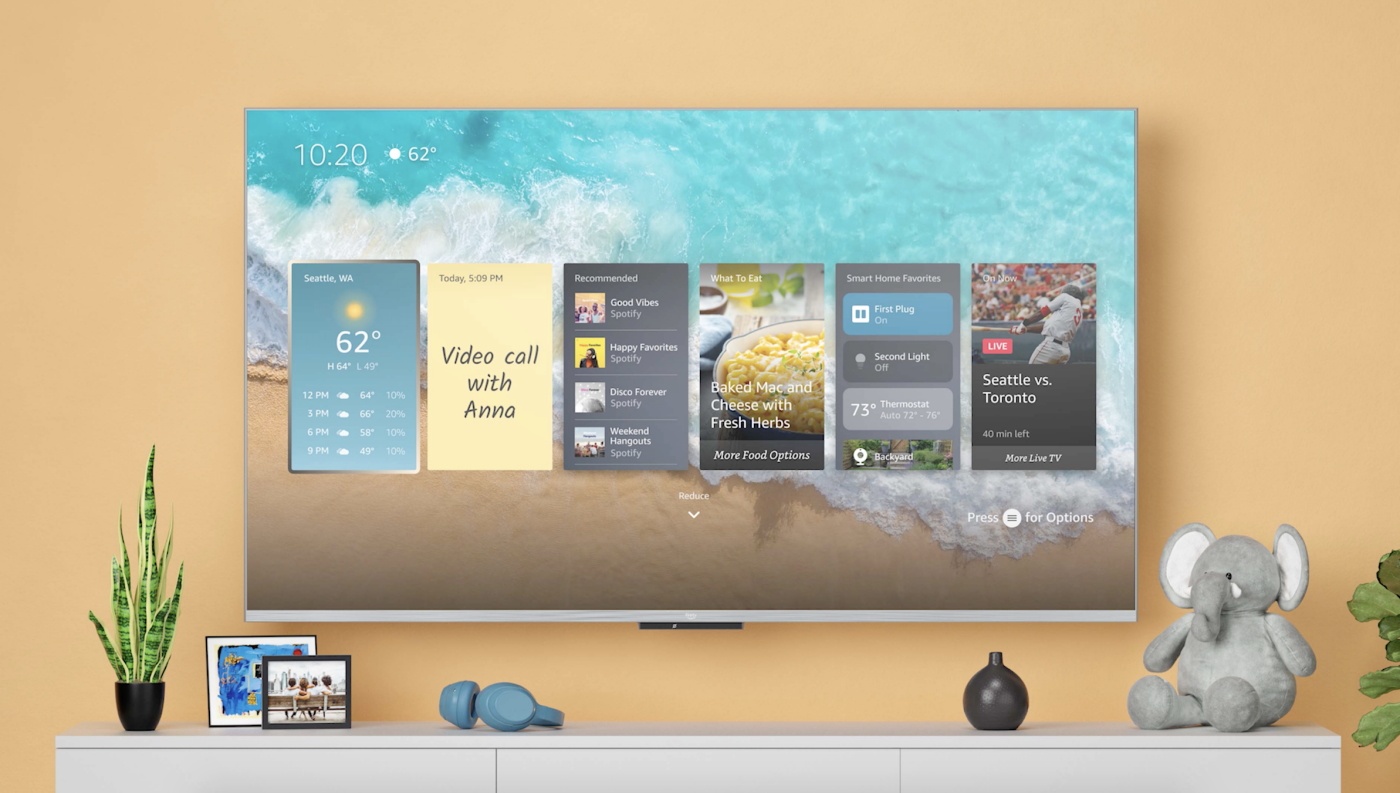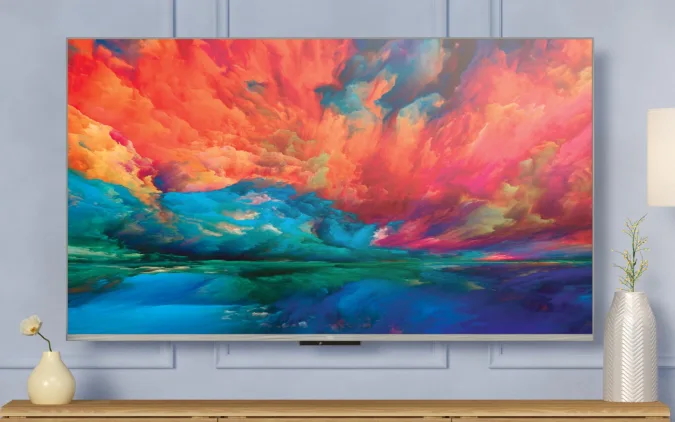4 things we learned about Amazon's new QLED Fire TV Omni Series
Amazon is upping its picture game with its new QLED Fire TVs

Amazon has been making its own line of Fire TVs for quite some time now, positioning them within the budget competition next to the likes of TCL, Hisense and Toshiba. However, Amazon has just announced a new range of QLED Fire TVs that look to compete with higher-end lifestyle sets like Samsung's The Frame.
For the uninitiated, Amazon now categorises its Fire TVs into three lines: the Fire TV 4-Series, the Fire TV Omni Series and – thanks to the latest launch – the Fire TV Omni QLED Series. As anyone familiar with Amazon's Fire and Echo hardware might expect, Fire TVs scale up in terms of features, picture quality, Amazon integration and, most importantly, price.
There's a lot to unpack here, so we're here to give you the lowdown on what we learned. Of course, we won't be able to tell you how these TVs actually perform until we get our hands on one for a full review. But if you're in the market for a big new TV and you don't want to drop thousands, an Amazon QLED Fire TV Omni Series model could be a good shout. Here are our main takeaways from the launch event...
1. They're much cheaper alternatives to Samsung's 'The Frame'

If you haven't heard of it before, The Frame TV is a 4K QLED set that Samsung markets as not just a standard television but also an art piece that looks and feels like a picture frame. The Frame comes with a matte display to cut down on reflections alongside 'Art Mode' where you can exhibit personal art or art purchased from the Samsung Art Store when you aren't watching TV.
You can also display NFTs, personal photos and, really, images of any kind on your Frame TV. You can also subscribe to an ever-expanding library of artwork to display on your TV through Samsung's Art Store.
The new QLED Fire TVs don't have customizable physical frames like The Frame (yet, anyway), but they do sport a minimalist look and relatively thin, grey bezels that can pass as those you might see on a picture frame. Plus, Amazon's Fire TV Omni QLEDs also allow you to display your own artwork or personal photos, or art offered by Amazon.
What's more is that Amazon's new Fire TV comes in 65-inch and 75-inch varieties that sell for $799 and $1099 respectively, while the same size of The Frame will set you back $1999 or $2599. For less than half the price of a Frame TV, you can get a Fire TV that brings a very similar set of art-focused passive-viewing features to the table.
The latest hi-fi, home cinema and tech news, reviews, buying advice and deals, direct to your inbox.
2. Picture quality should trump that of other Fire TVs, especially with HDR content

The new Fire TV Omni QLED Series upgrades the traditional LED panels of former Fire TVs to QLED panels that offer improved color accuracy, vibrance and brightness. On top of that, these new Fire TVs also support a decent selection of HDR technologies – Dolby Vision IQ, HDR10+ Adaptive and HDR10+ Gaming.
HDR10+ improves on 'vanilla' HDR by dynamically analysing a picture's metadata so that it can make adjustments to colors and brightness on a scene-by-scene basis. Meanwhile, HDR10+ Adaptive and HDR10+ Gaming build off HDR10+ – HDR10+ Adaptive relyies on an ambient light sensor to optimize brightness and contrast, while HDR10+ Gaming focuses on adapting HDR to work best with whatever type of game you're playing.
Full-array local dimming is another key upgrade to image quality on the Fire TV Omni QLED Series. While an OLED panel will almost always provide a better HDR experience with better contrast, when it comes to LED and QLED panels, full-array local dimming zones allow your TV to better control the brightness and contrast across the screen.
3. They're Amazon's smartest TVs yet

While aspects of the new Fire TVs' intelligence are giving some cause for concern, like the TV's ability to detect when you've entered a room to be able to power up automatically, many features sound like direct upgrades to earlier Fire TVs.
Now, the standard Fire TV is a smart TV firmly ensconced in Amazon's ecosystem and supports Alexa, while the Fire TV Omni Series builds in microphones for a hands-free, full-fat Alexa integration. The new Fire TV Omni QLED Series has all of the familiar Amazon functionality of older Fire TVs... plus some new stuff.
Coming to Fire TV Omni QLEDs are Alexa widgets like you see on Echo Show devices. So, while you can display artwork or personal photos on a QLED Fire TV when you aren't watching something, you can also display a series of Alexa widgets that include calendars, sticky notes, headlines, and more. You can also control smart home devices from your TV, or ask your TV to play music without the screen actually being turned on.
This might not be an earth-shattering revelation. However, being able to use your TV passively as not just an art piece but also a souped-up Echo Show for easy access to all kinds of information is sure to make those who already rely heavily on Amazon products and services quite happy.
4. Price is attractive in the premium TV market

Fire TVs often compete with other budget TV brands like TCL, Hisense, and Toshiba, all of which offer up catalogues of big TVs at not so big prices.
For example, you can get a 65-inch 4K/120Hz set from Toshiba for the absolutely shockingly low price of $500 (yes, you read that right), or you could pick up a 55-inch 4K HDR TCL Roku TV for just $319.
It's true that the Fire TV Omni QLED Series starts at $799 for the 65-inch model, which makes it more expensive than a lot of TCL or Toshiba sets, but these new Fire TVs come with premium QLED technology that often demands higher price tags. Compared not only to Samsung's The Frame but also the company's 'regular' QLED TVs, the Fire TV Omni QLEDs look like a steal and make big-screen QLED TVs more accessible than ever.
MORE:
Check out our list of the best 4K TVs around
As well as the best TV deals we can find
And our guide to QLED TVs vs OLED TVs
Ruben is a long-time freelance consumer technology and gaming journalist, and was previously a Staff Writer at What Hi-Fi?. Since 2014, Ruben has written news, reviews, features, guides, and everything in-between at a huge variety of outlets that include Lifewire, PCGamesN, GamesRadar+, TheGamer, Twinfinite, and many more. Ruben's a dedicated gamer, tech nerd, and the kind of person who misses physical media. In his spare time, you can find Ruben cooking something delicious or, more likely, lying in bed consuming content.

